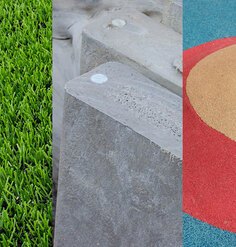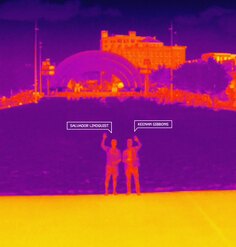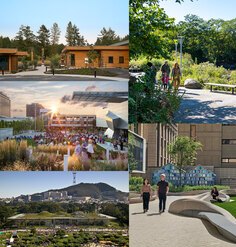From the Field: P is for Process
By Sadie L. Walters, MLA Candidate, North Carolina State University
The writings of Richard Louv, Rachel Carson, and Aldo Leopold have long served to guide me in my work and, ultimately, were responsible for leading me to landscape architecture. Since entering this circle, I have been inspired by the artful and environmentally sensitive work of historical and current landscape architects, including my teachers at North Carolina State University.
In my two years as a graduate student, I have come to the realization that evidence-based design is the direction in which I am headed — I want to know how landscape can be a bridge between human health and quality outdoor experience, how it can provide a corridor for the sweet song of the wood thrush, and how built environments can respond to and integrate with natural systems. To that end, landscape research has captured my focus. In the fall of 2014, Andy Fox approached me with an opportunity to participate in LAF’s Case Study Investigation (CSI) program. In this program, I saw an opportunity to frame and begin to answer some of these questions within three landscapes in the North Carolina Piedmont.
While the chill of winter still clung to the dry air, Andy and I began the process of gathering information about our three projects, meeting with the design firms and respective project stakeholders. There was excitement in every meeting as we explained the value of landscape research and the forthcoming recognition of each site’s commitment to sustainability. As our discussions gained momentum, lists of sustainable features and potential areas of study grew long — certified North Carolina native landscape, innovative stormwater treatment trains, native bee habitat, increases in garden membership and volunteerism, reduction in mower time, and on and on. Following the meetings, we were rich in the currency of performance criteria, and so began our (re)quest for records and data.
We collected data and had follow-up meetings well into late May; it was then that the research limitations became clear. The façade of mountains of information opened up to reveal key missing links, holes in data collection, and absent records. The month and a half of deep digging showed us that there were far fewer suitable research topics than our initial meetings had indicated. It was to no one’s fault but was simply a necessary reality of research.
Out of this experience, I offer the following lessons learned: take time early on to define your own method(s) of sorting through piles of information and develop a process to know when you will let go of a potential research topic and when you will push for more information.
As the heat of summer’s arrival pressed at the windows, Andy and I convened in his office for a conference call with LAF. As Andy described our current plans for measuring stormwater benefits, my eyes wandered to three books on his shelf — Louv, Carson, and Leopold. Even with our slimmed-down list of measurable performance benefits, it was clear that we were still on the path, and the future of our study, though quite full, was bright.
Research Assistant Sadie Walters and Research Fellow Andrew Fox are participating in LAF’s 2015 Case Study Investigation (CSI) program. They are working to evaluate and document the environmental, social, and economic performance of three exemplary landscape projects in North Carolina’s Research Triangle. Any opinions expressed in this article belong solely to the author. Their inclusion in this article does not reflect endorsement by LAF.














